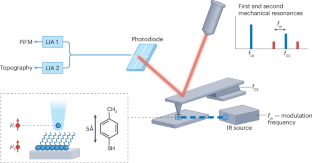2025-07-10 千葉工業大学,東京大学,国立科学博物館

マントルプルームによりもたらされる上部マントルの物質のムラ(不均質構造)の空間スケールを定量的に解明
<関連情報>
- https://www.t.u-tokyo.ac.jp/press/pr2025-07-10-001
- https://www.t.u-tokyo.ac.jp/hubfs/press-release/2025/0710/001/text.pdf
- https://www.sciencedirect.com/science/article/pii/S0024493725002348
中大洋海嶺を横断する解析から、梅に由来する不均質性の規模が明らかになった Analyses across a mid-ocean ridge give the scale of plume-fed heterogeneity
Shiki Machida, Kyoko Okino, Kana Ashida, Shigekazu Yoneda, Yasuhiro Kato
Lithos Available online: 7 July 2025
DOI:https://doi.org/10.1016/j.lithos.2025.108175
Highlights
- Basalts were collected from sites spaced perpendicular to the mid-ocean ridge.
- Data constrain the source heterogeneity of the CIR fed by the Réunion mantle plume.
- The cross-sectional primary length-scale of the plume core is less than 10 km.
- The length-scale is one order of magnitude smaller than that of seismic detections.
Abstract
The primary spatial scale of heterogeneity in the Earth’s upper mantle, introduced from plume sources thousands of kilometres in scale at the base of the mantle, is critical for understanding mantle convection but is poorly constrained. Here, we demonstrate a geochemical shift in a set of lava samples collected from sites spaced approximately 10 km apart perpendicular to the Central Indian Ridge, which shows the length scale for a cross-section of concentric asthenospheric flow through the Réunion plume. This conclusion is derived from a mixing model that incorporates all expected mantle endmembers and common mantle components to reconstruct Sr–Nd–Pb isotopes and trace element profiles of lavas. The mixing model revealed that more than 95 % of the geochemical fingerprints of lavas are dictated by interactions between depleted mid-ocean ridge basalt mantle (DMM) and the prevalent mantle component of the plume (PREMA). The remaining, more specific features are contributed by varying proportions of enriched mantle components for each volcanic stage, reflecting the proposed archetypal chemical structure of the plume source at the base of the mantle. The latter additional components are concentrated in the core of the asthenospheric plume flow, which provides the primary short-length-scale (<10 km) heterogeneity in the upper mantle. Material transport from the lower mantle to the upper mantle thus occurs on a scale one order of magnitude smaller than that of seismic detection. This result provides a high-resolution constraint on solid-Earth convection models.



